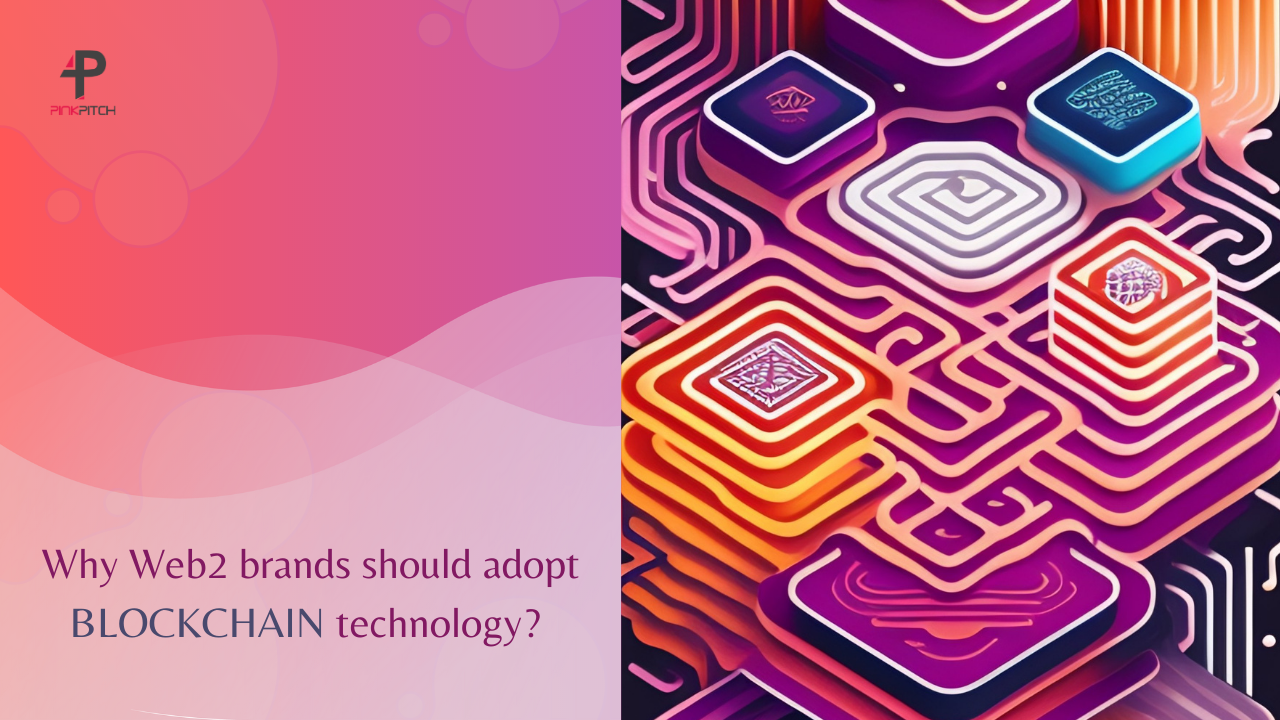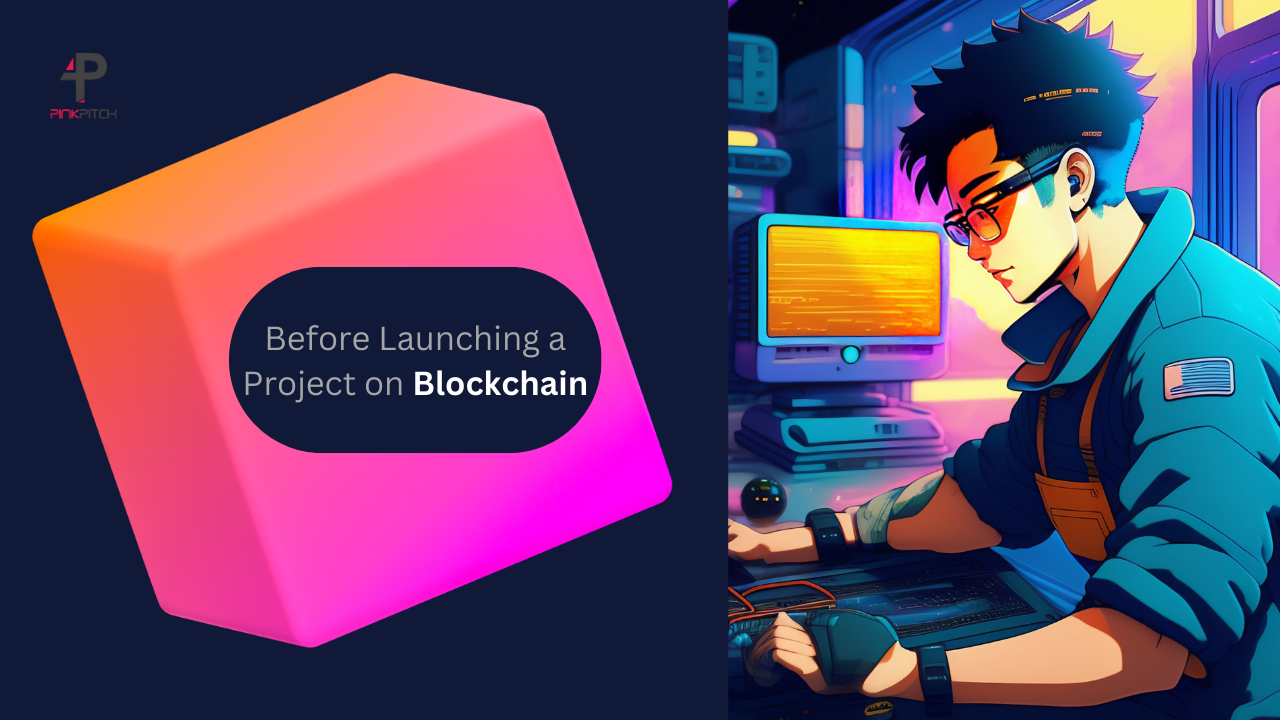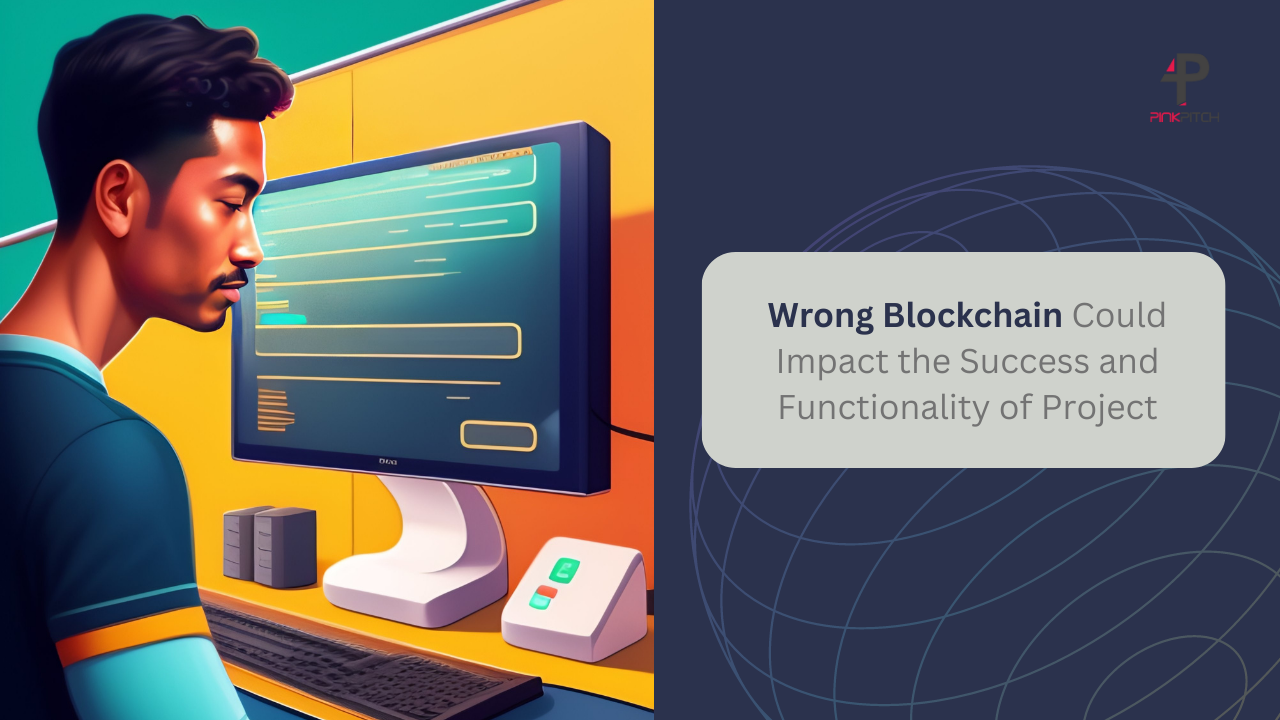This post is divided into four segments:
-
Why Web2 brands should consider adopting blockchain technology
-
Before launching a blockchain project
-
After launching a blockchain project
-
Selecting wrong blockchain could potentially impact your project
Before we talk about the preparations of launching your WEB3 project, let’s discuss why WEB2 brands should consider adopting blockchain technology.
Web2 brands can benefit from adopting blockchain technology for several reasons:

Transparency and Trust: Blockchain technology enables transparent and immutable record-keeping, allowing for increased trust and accountability. By leveraging blockchain, web2 brands can provide verifiable proof of authenticity, origin, ownership, and transaction history. This transparency can help build trust among consumers and stakeholders.
Enhanced Security: Blockchain technology offers robust security features, making it highly resistant to hacking and fraud. It utilizes cryptographic techniques to secure data, ensuring that transactions and records cannot be altered without consensus from the network participants. This added security can protect sensitive user information and prevent data breaches.
Decentralization and Disintermediation: Web2 platforms often operate in a centralized manner, with a central authority controlling user data and transactions. Blockchain introduces decentralization, where data and transactions are distributed across a network of computers, eliminating the need for intermediaries. This decentralization can reduce dependency on centralized entities, enabling greater user control and privacy.
Tokenization and Incentives: Blockchain enables the creation of digital tokens that represent ownership, value, or utility. Web2 brands can leverage tokenization to create loyalty programs, incentivize user engagement, or reward contributors within their ecosystem. This can foster user participation and create a vibrant community around the brand.
Smart Contracts and Automation: Blockchain platforms often support smart contracts, which are self-executing contracts with predefined rules encoded into the blockchain. Web2 brands can utilize smart contracts to automate various processes, such as supply chain management, content licensing, or royalty distributions. This automation reduces administrative overhead, streamlines operations, and enhances efficiency.
Interoperability and Collaboration: Blockchain technology allows for interoperability between different platforms and systems. Web2 brands can leverage blockchain's interoperable nature to collaborate with other brands, share data securely, and streamline cross-platform interactions. This collaboration can unlock new business opportunities and enhance user experiences.
Token Economy and Fundraising: Blockchain technology enables the creation of token economies, where tokens can be used as a medium of exchange or investment. Web2 brands can utilize blockchain-based crowdfunding mechanisms, such as initial coin offerings (ICOs) or token sales, to raise funds for their projects or expansion plans. This can provide alternative funding options and increase access to capital.
Overall, adopting blockchain technology can empower web2 brands with enhanced security, transparency, decentralization, automation, and new revenue models. It can help them stay competitive, build user trust, and unlock innovative opportunities in the evolving digital landscape.
Launching a project on the blockchain requires careful planning to ensure its success. Here are some key steps you should consider before launching your blockchain project:

Define your project's objective: Clearly identify the problem you are trying to solve or the goal you want to achieve with your blockchain project. This will help you stay focused throughout the development and launch process.
Conduct thorough research: Understand the existing blockchain landscape, including different platforms, protocols, and projects. Determine which blockchain technology aligns best with your project requirements. Consider factors such as scalability, security, consensus mechanism, and community support.
Create a solid project plan: Outline the technical and business aspects of your project. Define your target audience, project timeline, resource requirements, and anticipated milestones. This plan will serve as a roadmap for the development and deployment phases.
Build a skilled team: Assemble a team of professionals with expertise in blockchain development, smart contracts, security, and relevant domains. Ensure that your team members have a clear understanding of blockchain technology and its potential.
Determine the blockchain platform: Choose a blockchain platform that suits your project requirements. Popular platforms include Ethereum, Polygon, Solana, Optimism, EOS, and TRON. Consider factors such as scalability, transaction costs, programming language support, and community ecosystem.
Design smart contracts: Smart contracts are self-executing agreements that govern the behavior of the blockchain application. Design and develop smart contracts that accurately reflect the logic and rules of your project. Ensure rigorous testing and auditing to avoid vulnerabilities.
Develop a minimum viable product (MVP): Prioritize the development of an MVP to showcase the core functionality of your project. This will help you gather user feedback, attract early adopters, and secure potential partnerships or investments.
Establish partnerships and collaborations: Collaborate with relevant industry partners, blockchain communities, and potential users to build a network and create a supportive ecosystem around your project. Seek partnerships that can enhance your project's reach and credibility.
Address legal and regulatory considerations: Understand the legal and regulatory requirements related to blockchain projects in your target jurisdiction. Compliance with data privacy, securities, and anti-money laundering regulations is crucial.
Implement robust security measures: Blockchain projects are susceptible to various security risks. Implement strong security measures to protect user data, prevent unauthorized access, and secure smart contracts from potential vulnerabilities. Conduct regular security audits.
Develop marketing and launch strategy: Create a marketing plan to generate awareness and interest in your project. Leverage social media, content marketing, community engagement, and targeted outreach to attract users and potential investors.
Prepare for post-launch support: Allocate resources for ongoing maintenance, updates, and community management after the launch. Actively engage with your user base, address their concerns, and continuously improve your project based on user feedback.
Remember, launching a successful blockchain project requires a combination of technical expertise, strategic planning, and effective execution. Stay adaptable and open to learning throughout the process, as the blockchain space is rapidly evolving.
After launching your project on the blockchain, there are several important steps you can take to ensure its success and growth. Here are some recommendations:

Community Engagement: Build and nurture a community around your project. Engage with your users, investors, and stakeholders through social media, forums, and community platforms. Provide regular updates, address concerns, and encourage feedback. Building a strong community will help create brand loyalty and attract new users.
Marketing and Promotion: Develop a comprehensive marketing strategy to raise awareness about your project. Utilize various channels such as social media, content marketing, influencer collaborations, and targeted advertising campaigns. Highlight the unique features and benefits of your project and differentiate it from competitors.
Partnerships and Collaborations: Explore potential partnerships with other projects, blockchain platforms, or businesses that complement your project. Strategic collaborations can help expand your reach, enhance credibility, and provide access to new markets. Look for opportunities to integrate or leverage existing blockchain ecosystems.
Continuous Development and Improvement: Maintain a strong focus on the development and improvement of your project. Gather user feedback and analyze market trends to identify areas for enhancement. Regularly release updates, bug fixes, and new features to provide value to your users and stay ahead of the competition.
Security and Scalability: Pay close attention to the security and scalability of your blockchain project. Implement robust security measures to protect user data and funds. Explore potential solutions to enhance scalability and ensure your project can handle increased user adoption without performance issues.
Regulatory Compliance: Stay updated with the evolving regulatory landscape surrounding blockchain and cryptocurrencies. Ensure that your project complies with relevant laws and regulations in the jurisdictions where you operate. Consult legal experts to navigate any regulatory challenges effectively.
Partnerships with Exchanges: Seek listings on reputable cryptocurrency exchanges to increase liquidity and accessibility for your project's token. The availability of your token on exchanges will allow users and investors to buy, sell, and trade it easily.
User Education and Support: Provide comprehensive resources and support channels to educate your users about your project and how to use it effectively. Offer tutorials, FAQs, and user guides. Establish efficient support channels to address user inquiries and troubleshoot any issues promptly.
Continuous Innovation: Monitor market trends and emerging technologies to identify opportunities for innovation within your project. Stay open to incorporating new blockchain advancements or exploring adjacent technologies that can enhance the functionality and user experience of your project.
Financial Planning and Management: Ensure you have a solid financial plan and manage your project's finances effectively. Monitor expenses, budget accordingly, and seek additional funding if required. Implement sound financial practices to maintain sustainability and long-term growth.
Remember that launching a project on the blockchain is just the beginning. Consistent effort, adaptability, and a user-centric approach will be crucial for your project's success in the competitive blockchain landscape.
Selecting the wrong blockchain for your web3 project can have significant implications for the success and functionality of your project. Here are some potential impacts:

Performance and Scalability: Different blockchains have varying levels of performance and scalability. Choosing a blockchain that cannot handle the transaction volume or throughput required by your project can lead to slow transaction processing times, network congestion, and limitations on the growth of your application.
Cost: Blockchain transactions often incur fees, such as gas fees in Ethereum. If you choose a blockchain with high transaction fees or complex fee structures, it can significantly impact the cost of using your application. This may deter users and make your project less economically viable.
Ecosystem and Developer Support: The blockchain you choose should have a robust ecosystem and developer community. This ensures access to tools, libraries, and resources that can facilitate the development and maintenance of your project. An inadequate ecosystem may result in limited technical support, fewer integrations, and difficulties in finding skilled developers.
Interoperability: If your project requires interaction with other blockchain-based applications or protocols, choosing a blockchain with limited interoperability can hinder integration efforts. Lack of compatibility and standardization across different blockchains may limit the possibilities for collaboration and reduce the potential user base.
Security and Trust: Blockchain security is crucial, as any vulnerabilities or weaknesses can result in hacks, smart contract exploits, or loss of user funds. Selecting a blockchain with a poor security track record or lacking in proven security mechanisms can undermine the trust of your users and damage your project's reputation.
Regulatory Compliance: Blockchains operate under various regulatory frameworks, and the legal and compliance considerations can differ across different blockchain platforms. Choosing a blockchain that doesn't align with the regulatory requirements of your project's jurisdiction may result in legal complications and restrictions on its usage.
Governance and Consensus Mechanism: The governance and consensus mechanism of a blockchain determine how decisions are made and protocol upgrades are implemented. Different blockchains employ different mechanisms, such as proof of work (PoW), proof of stake (PoS), or delegated proof of stake (DPoS). Selecting a blockchain with a governance model that doesn't align with your project's requirements or values can lead to disagreements, forks, or difficulties in achieving consensus.
It is crucial to thoroughly research and understand the characteristics, capabilities, and limitations of various blockchains before making a decision. Consider the specific needs and objectives of your project, as well as the potential impacts on performance, cost, ecosystem support, interoperability, security, compliance, and governance.
Also read:
-
How to launch NFT smart contract on HeyMint with no technical experience?
-
How you can bargain or interact with sellers on OPENSEA - Introducing Relation One Chat Plugin
-
How Web3 will redefine the fashion industry - PINK PITCH Guide
Subscribe us: